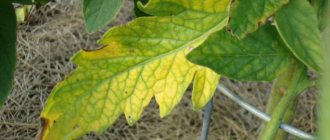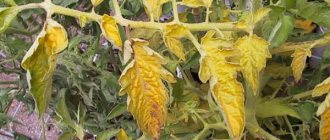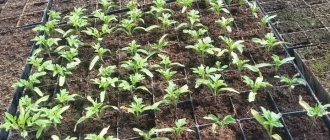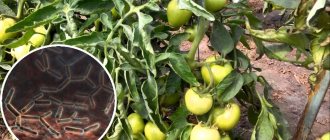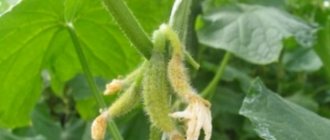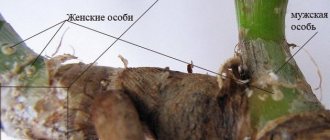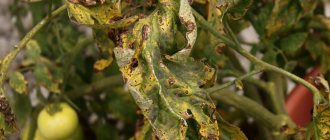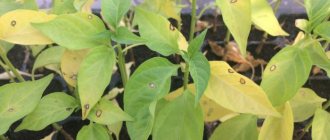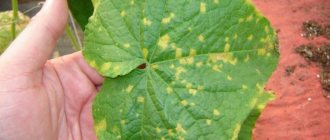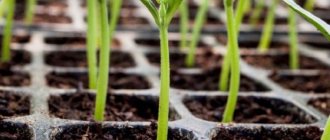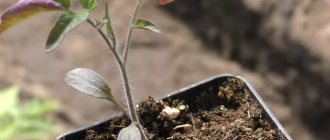A crop such as tomato grows in any summer cottage. Tomatoes are usually grown in seedlings. And this process is very labor-intensive, requiring knowledge and accuracy. After all, even a newly emerged sprout is susceptible to a lot of diseases and, if certain rules are not followed or the microclimate is created incorrectly, it may die. The question of why the leaves of tomato seedlings dry is of interest to many vegetable growers, especially beginners. This article will discuss the main reasons for this phenomenon and provide recommendations for improving the condition of the plant.
Microclimate disturbances
For normal growth of tomatoes, certain conditions must be present. Often, yellowing of leaves occurs due to the fact that the temperature or watering conditions are not suitable for the tomatoes. Accordingly, it is necessary to correctly identify the causes in order to get rid of the problem.
Temperature
For tomatoes to grow fully, they need a certain temperature: 20-25 degrees during the day and 18-20 at night. Tomatoes perceive temperature changes, especially sudden ones, extremely negatively.
Wilting and yellowing of the leaves of the plant is the first sign that the temperature is above normal. If this continues in the future, the inflorescences will begin to fall.
Important! To reduce the temperature in a tomato greenhouse , it must be ventilated. Therefore, it is necessary to have windows in the greenhouse; this should be taken into account when designing the structure.
In order to reduce the impact of ultraviolet radiation on tomato seedlings , you need to cover the glass in greenhouses with lime or use containers with cold water placed between the bushes.
In open ground, a canopy will help save the shoots from excessive temperatures. An excellent and simple option would be a piece of white fabric.
Watch the video! Are your tomato leaves starting to turn yellow? What is the reason and what to do?
Hypothermia
When exposed to cold conditions that are unacceptable for tomatoes, the plants begin to slow down their growth. In the absence of primary signs of oppression, the foliage becomes completely yellow with a blue border. The stem takes on a violet or purple hue. Without taking timely measures, the leaves of the tomato bush dry out over time.
Fighting methods
A number of timely measures can help prevent the development of hypothermia:
- strict adherence to the timing of planting tomato crops in unprotected soil, taking into account the climatic characteristics of the region,
- preferential planting of seedlings in a greenhouse, which prolongs the vegetative period and fruiting,
- selection of seed material from a series of ultra-ripe tomato varieties that ripen before the first frost occurs at night in late summer.
It is possible to help overcooled tomato bushes if you use adaptogens, including Epin, Zircon and aloe. Solutions containing them are sprayed on the foliage and also watered on the bushes.
Covering plants with dense material, such as film, helps to save plants from hypothermia, but we must not forget that the root system will remain in the cold soil.
Watering tomatoes
One of the reasons that tomato leaves turn yellow and dry is improper watering. The vegetable crop prefers abundant watering, but not frequent. The tomato root system is well developed; they can receive moisture and beneficial elements from a depth of up to one meter.
Important! The optimal regime for watering tomatoes is twice a week at the rate of 3 liters of water for each bush.
If there is enough rainfall, you can water less often. It is necessary to water at the root, avoiding water getting on the leaves and stems, so as not to cause a burn.
Water tomatoes with warm water. An excellent option would be rainwater collected in a container and heated in the sun. The best time for watering is morning or evening, when there is no direct sunlight. When the tomatoes begin to bloom, you can slightly increase the frequency of watering.
Mulching with compost or straw will be a good help to ensure that the humidity level is maintained at the desired level. Another useful property of mulch is the amount of weed growth, without the need to loosen the soil.
Yellowed tomato leaves may be a signal to adjust the watering scheme.
The use of stimulants and folk remedies
The chemical industry presents many drugs to stimulate the growth and development of bushes. Here are the most common and proven means:
- "Stabilan";
- "Heterauxin";
- "Bud";
- "Zircon";
- "Energen";
- "Kornevin".
You can replace biological products with stimulants based on folk recipes. One of them is a solution of aloe juice. It has excellent bactericidal properties. First, aloe leaves must be minced, then left for 2 weeks in the refrigerator. For 10 liters of water, a glass of this infusion is enough. It is recommended to water young plants at the root with the resulting solution.
Natural honey is an effective development stimulator. It also reduces the likelihood of fungal diseases. The solution is prepared at the rate of 1 tbsp. l. for 1 liter of water. It is suitable for seedlings and young bushes.
Fertilizer shortage
It happens that tomato leaves begin to turn yellow if there is an insufficient amount of nutrients in the soil. This often happens in greenhouses over a large area or in open areas, in other words, where it is more difficult to control the quality of the soil.
Nitrogen
When a plant lacks this substance, it is immediately noticeable. The main signs are yellowing and falling off of dried tops. If this problem is not corrected urgently, the bushes begin to stretch out and the shoots become pale.
Important! It is necessary to apply fertilizers with nitrogen when transplanting tomatoes to a permanent place and when the fruits begin to set.
The benefit of nitrogenous fertilizers is the growth of green mass. Urea can be used for feeding. To do this, you need to dissolve 40 g of the substance in a bucket of water and spray the plantings.
The main thing is not to forget to dose fertilizers correctly. If there is too much nitrogen, the tomato tops will grow vigorously. The crop needs to be fed only until its condition improves.
Potassium
With a lack of this substance, the leaves turn yellow and dry, and the young shoots curl into a boat. Small spots appear along the edges, which subsequently merge with each other, causing the leaves to dry out.
Plants are fertilized with potassium during the growing season, at any stage. But you should pay attention when the fruits begin to ripen.
Advice! Fertilizers containing potassium must be chosen without chlorine.
You can choose potassium sulfate for such feeding. Thanks to it, the amount of vitamins and sugars in vegetables will increase, which allows the plant to acquire resistance to diseases.
To feed the tomatoes, take 40g of potassium sulfate, which must be dissolved in a bucket of water. Water the crop at the root or spray it on the leaf.
Magnesium
If its quantity is insufficient, the leaves first turn yellow along the veins and then curl.
Magnesium sulfate will help restore the normal level of this substance. For watering at the root, take 40 g per 10 liters of water, and for spraying - 20 g per the same amount of water.
The beneficial properties of magnesium include helping in the absorption of other substances such as nitrogen, phosphorus and calcium. This has a positive effect on the yield, the taste of the fruit, and the speed of development.
Sulfur
By the appearance of red veins on the leaves, which acquire a light green tint and subsequently turn yellow, a sulfur deficiency can be diagnosed. If this deficiency is not corrected, the stems become weak and brittle.
Ammoniated sulfate is well suited to restore sulfur deficiency. It can simply be dissolved in water for watering tomatoes. This will provide vegetables with sufficient amounts of sulfur and potassium.
Iron
Chlorosis occurs due to iron deficiency. In such cases, yellow leaves appear, but the veins remain green. With a long-term deficiency, the color at the top of the bush loses brightness and saturation, and the bush stops developing.
To compensate for iron deficiency, use a solution of iron sulfate. To prepare, take 5g of water per bucket and spray the tomato bushes . To consolidate the result, you should repeat the procedure after 7 days.
Watch the video! Why do tomato leaves turn yellow? Fertilizers with microelements
How to save tomato seedlings?
When the leaves of tomato seedlings dry out, every vegetable grower should know what to do. First, you need to determine the root cause of this condition. And based on this, try to improve the situation.
Experts give the following advice:
- If the cause is dry air, correcting the situation is quite simple. It is enough to periodically spray the plant with a spray bottle. Experts also recommend placing a container of liquid next to the container with the seedlings.
- In case of excess salts in the ground, to save the young animals, it is necessary to replace the top layer of soil with a new, better quality one. All watering must be carried out only with settled or filtered water.
- If there is a lack of potassium, fertilizing with potassium sulfate or potassium magnesium is effective. Some experts also recommend an infusion of ash. It is more harmless, but no less effective.
- If the reason is poor watering, solving the problem is quite simple. The soil should not be allowed to dry out. But it’s also not worth filling it up. The soil should have time to dry out between waterings. To check, use matches or sticks.
- When infected with late blight, an ash-based tincture is used, as well as various products containing copper. To prevent tomato seedlings from getting sick again, prevention should be carried out. To do this, the plant is treated with special chemicals. Fertilizers are also applied to strengthen the crop’s immunity.
It is important to note that fungal diseases are extremely difficult to fight; prevention is much easier.
To do this, it is advisable to collect seeds for future seedlings from healthy, mature shrubs. It is even better to buy seed in a specialized store. Before sowing, it is good to etch the seeds with a weak solution of potassium permanganate. Containers for seedlings should be disinfected. All the tools too. It is worth using high-quality soil that is free from infection.
- If the cause is a deficiency of nitrogen and potassium, fertilizing will be required. However, it is important not to overdo it with nitrogen. Because its excess also has a detrimental effect on the plant. The seedlings become thick and their leaves become powerful. Such a crop will bloom and bear fruit poorly, since all efforts are spent only on increasing the green mass.
Potassium deficiency can be easily compensated by irrigating the soil with an infusion of banana peels or ash infusion. Similar feedings are done three times a week. To avoid the problem of the lower leaves of tomato seedlings drying out, you need to be able to apply fertilizers correctly and on time.
- If there is a lack of sunlight, the seedlings should be moved to a more illuminated place. You can also create artificial lighting by installing a fluorescent lamp.
When the leaves of tomato seedlings fall off, inexperienced vegetable growers do not know what to do, which is why they often lose the harvest, although it is quite possible to save the plant. For example, try replanting the sprouts in fresh soil. In any case, such a procedure will not harm. To perform this operation, you need to carefully remove the old soil from the roots. The roots should be examined carefully. If they turn yellow, turn black, or rot, you will have to throw away such seedlings.
If they are in good condition, continue replanting. The soil should be light, with good aeration. It is advisable to pour a spoonful of manganese solution under each young animal. Cups with sprouts are placed in a sunny place. But if the tomato seedlings dry out after transplanting, they need to be placed in the shade for a while. The roots were probably damaged during the procedure. It is important to give them time to strengthen and take root. And only then put it in a sunny place.
A situation often arises: a summer resident works tirelessly on seedlings, but even with sufficient watering and proper feeding, the tomato seedlings still disappear - few people know what to do in this case. Why are the sprouts in this state if all the growing rules are followed? Here it is important to check that the soil is not contaminated with fungal infections, viruses and other pathogens. It probably needs to be replanted in new soil. You can try to defeat the infection by spraying with special industrial solutions against pests and fungi.
Diseases that affect culture
Diseases are also one of the causes of yellowing leaves. They occur in several cases: with excess moisture or improper care of plants. It is necessary to fight diseases with special drugs.
Fusarium
This disease is caused by fungal spores. The disease affects roots, stems, tops and fruits. Although the plant is affected at any period of its growth, it is especially common during the formation of fruits.
Symptoms of the disease include yellow leaves that curl and wilt. When cut through the stem, brown vessels will be visible. The disease affects the bottom of the plant, smoothly moving to the top.
If fusarium has already appeared on a plant, it must be destroyed so that the infection does not spread further. Preventive methods include treating seeds with fungicides before planting, as well as tilling the soil. Plants must be planted at a distance of 30 cm from one another, weeds must be controlled in a timely manner and the soil must be loosened.
Late blight
A fungal disease that manifests itself by the formation of brown spots on yellowing leaves.
If this disease is detected, the infected parts should be destroyed and the greenhouse should be ventilated to reduce humidity.
After this, healthy plants must be treated with biological preparations, for example, using Fitosporin or Trichophyte. After spraying, it is necessary to rinse the tomatoes that will be eaten especially thoroughly.
Chemicals “Quadris”, “Hom” and “Ridomil” can be used only if the crop begins to ripen in a month. They are also used after harvest to disinfect the greenhouse and soil.
For prevention purposes, you can use a solution of 15 drops of iodine, a liter of milk and 9 liters of water. Spraying with this product helps to form a film on the surface, thanks to which harmful bacteria cannot penetrate inside.
Iron deficiency
The main problem with yellowing of tomato foliage is chlorosis associated with iron deficiency. Bushes are very sensitive to this phenomenon. Experienced gardeners advise in this case to add ash and ash solutions to the soil. There is also comprehensive care for such plants. Foliar feeding will not help balance nutritional deficiencies. You also need to add nutrients to the soil.
To mobilize iron production, the soil must be acidified. In this case, vinegar dressing is suitable. You can take homemade apple cider vinegar, essence, 9% table vinegar. For one bucket of water you need to dilute 0.3 liters of vinegar and 15 ml of ammonia. Under each bush, pour 0.5 liters of this solution, only onto prematurely moistened soil. This fertilizing can be supplemented with organic fertilizers. They contain a lot of nitrogen, which is so necessary for increasing the vegetative mass of plants.
The appearance of pests
Tomatoes suffer from aphids, spider mites and whiteflies. These pests suck sap and vitality from plants. Their spread leads to yellowing of foliage and wilting.
Insects can be controlled by spraying. The preparations “Inta-vir” and “Iskra” are used if there is a month before the tomatoes begin to ripen. They will not harm the crop and soil, but will have a paralytic effect on the nervous system of pests.
"Biotlin" is used if the crop ripens in less than a month. This drug works faster.
Soil salinity
Oversalinity of the soil, or in other words its excessive mineralization, also adversely affects the condition of the seedlings - the leaves on the tomatoes dry out and may wither. Signs of this phenomenon are white and yellow blotches appearing in the ground.
Reasons for soil salinity for seedlings:
- too frequent and intensive fertilizing with mineral fertilizers;
- watering with tap water, which contains a greatly increased content of iron, magnesium, chlorine and other impurities.
Solution
What to do to correct the situation and ensure the full development of seedlings:
- Carefully remove the top layer of soil by approximately 1 cm.
- Add fresh, pre-disinfected soil.
- Set up the correct watering regime and eliminate the application of fertilizers for at least 2 weeks.
Prevention measures
In order not to be puzzled by the problems of tomato seedlings dying on the windowsill, plant them correctly and organize reasonable care:
- Be sure to treat the soil and container before planting.
- Provide good access to light, heat, and normal humidity levels.
- Follow the watering rules, using only water suitable for these purposes.
- Monitor the condition of the soil regularly.
- Apply special fertilizers and fertilizing without reducing or exceeding the recommended dosage. If you prefer professional ready-made fertilizers, make sure that the package is marked “for tomatoes.”
Growing tomato seedlings should be a pleasure and a pleasant pastime for you with the hope of a further bountiful harvest. And for this to be so in reality, it is enough just to carefully monitor the development of plants and not ignore possible signs of diseases, do not let them take their course.
Possible diseases of tomatoes leading to yellowing of tomato leaves and their wilting
Dry leaves can be a consequence of tomatoes being damaged by tobacco mosaic, late blight, curl virus, or fusarium wilt.
How to identify tomato disease by leaf - video
Tobacco mosaic.
The first sign of the disease is the appearance of spots on the leaves, which gradually spread to the entire plant and affect the fruits themselves, making them unsuitable for food consumption. When a disease is detected, you need to take action immediately, because its development occurs very quickly.
Photo of tobacco mosaic on tomatoes
Late blight.
It is a fungal disease. It is quite common among vegetable crops. The very first sign is the appearance of a white coating on the leaf plate. The lower parts of the leaves become dark, spots appear on them, and the leaves dry out and fall off.
Photo of late blight in tomatoes
Fusarium (or fusarium wilt)
can destroy tomatoes. The fungus penetrates through the soil into the root system and gradually spreads to the entire plant, penetrating the foliage and fruits. If the disease is present, you may notice rapid wilting, curling and falling of the lower leaves.
Photo of fusarium (or fusarium wilt)
Curly virus
is a viral disease that also causes tomato leaves to curl and wilt. First, you can notice a change in the color of the leaves, shredding of the green mass, and its curling.
Photo of curly hair virus
Failure to comply with temperature conditions
Tomatoes are a heat-loving crop. To ensure that the ovaries do not begin to turn yellow and fall off, it is important to observe the temperature regime when caring for seedlings. It consists of regulating temperature at different stages of growth:
- It is not recommended to sow seeds earlier than mid-March, when daylight hours are still too short and the seedlings are too cold on the windowsill.
- The optimal temperature for germinating seed material is 23-25°C.
- After germination, it is important to prevent the sprouts from stretching. The optimal air temperature during this period is 16-18°C.
- 10 days after the emergence of seedlings, it is recommended to set a new temperature regime: increase daytime values to 20-23°C, and set nighttime values at 17-19°C.
A decrease in temperature values, overheating, as well as a sharp change in temperature leads to the cessation of development of the root system. As a result, the stems stretch unnaturally, and the lower leaves dry out and begin to fall off.
Main reasons
The most common reasons are obvious and banal: lack of sun, water or nutrients. Such problems are quite easy to correct, and the seedlings will return to normal on their own. But at the same time, yellowness can be an alarming symptom of various diseases or fungus. More radical action is needed here.
Sometimes yellowing is a natural process that indicates the plant’s adaptation to the conditions around it. It may indicate problems with the absorption and transfer of minerals. In any case, it is better to wait a couple of days first - perhaps the problem will disappear on its own. The main thing is to make sure there are no other symptoms!
Photo: 2sotki.ru
Reasons why tomato leaves dry and turn yellow in a greenhouse
Yellowing and drying of tomato leaves occurs for various reasons. Some only lead to yellowing, others lead to drying and curling of the leaves. In both cases, it is important to maintain the microclimate in the greenhouse, so this reason can be attributed to both cases.
Why do tomato leaves turn yellow in a greenhouse - video
Microclimate in the greenhouse
An inappropriate microclimate inside the greenhouse can destroy all tomato plantings.
The first thing you need to do is understand the construction of a greenhouse structure and follow the following rules:
- You need to build a greenhouse in a place well protected from the winds. Preference should be given to a site surrounded by buildings or garden plantings of appropriate height, for example, tall trees and shrubs. This is especially true during lunch, when the scorching sun is present. Such rays will heat the greenhouse and increase the temperature inside it in some cases to +45 degrees. The ovaries and flowers will begin to shed and yellowness will form on the leaves of the tomatoes.
- Replace the soil annually. After all, it is in it that fungal spores, bacteria, and infectious pathogens settle. When it is not possible to completely change the soil, it is spilled with a solution of potassium permanganate or boiling water a couple of days before placing tomato seedlings in it.
- When spring comes, disinfect structural elements, including treating all tools used in the greenhouse.
- Periodically you need to ventilate the greenhouse with tomatoes to evaporate excess moisture.
- If necessary, increase the humidity by simply spraying with a spray bottle. You can simply install open containers filled with water.
- Create a heating system that can be used if necessary.
Let's choose tomatoes!
Tomato Country delicacy Tomato Pride of Siberia Tomato King of the Giants
Attention!
The most favorable environment for the proliferation of fungi and infections is humidity and warmth. This applies more to the greenhouse, since it is here that there is such a problem as high humidity and high air temperature.
